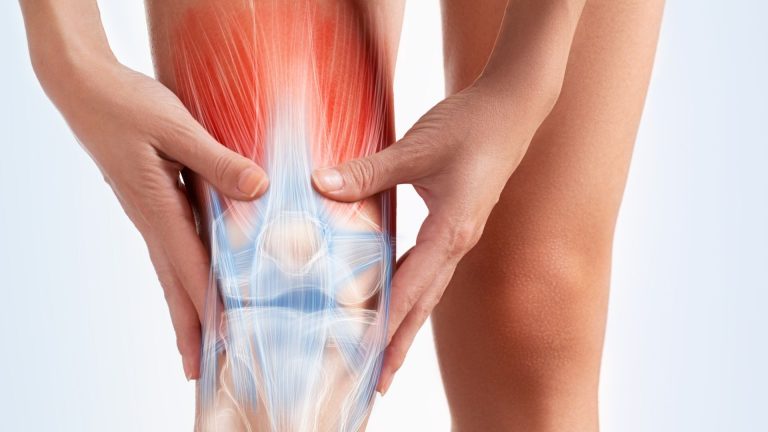Experts: The belief that shingles is a trivial disease is a harmful myth

Up to 30 percent people who get shingles later suffer from postherpetic neuralgia: a chronic pain that is difficult to cure. Some of them deal with pain even for the rest of their lives. The risk groups for severe disease include people over 50 and people over 18 with serious comorbidities. For some people, the vaccine should be free of charge: experts argue.
Shingles is a disease caused by the Varicella zoster virus. The primary infection occurs in the form of chickenpox, but after it disappears, the virus is not eliminated from the body, but remains in a latent form in the sensory ganglia of the nervous system, even for many years. In some people, when the immune system weakens, the virus reactivates: a characteristic vesicular rash appears, usually on one side of the body (hence the name “shingles”) and pain.
– We need to destroy the myth that shingles is a mild and not serious disease. Observing patients admitted to our clinic, I see how often they have extensive lesions, various types of superinfections and skin erosions, which leave scars. The locations of the changes are different, e.g. ophthalmic herpes zoster can damage the cornea, which is very dangerous and may even lead to loss of vision – says Prof. Krzysztof Tomasiewicz, head of the Infectious Diseases and Hepatology Clinic of the Medical University of Lublin, vice-president of the Polish Society of Epidemiologists and Infectious Disease Physicians.
If you get sick, you need to see a doctor as soon as possible. However, treatment is not always effective, especially if it is not started immediately. – In the case of older people with serious comorbidities, drugs must be administered carefully to avoid their side effects. Shingles may also complicate the course and treatment of the underlying disease, notes Prof. Krzysztof Tomasiewicz. Pain treatment is also necessary because untreated acute pain often turns into chronic pain.
Postherpetic neuralgia
In approximately 20-30 percent patients develop postherpetic neuralgia (even if the disease was adequately treated in the acute phase). This is one of the most common and serious complications of shingles: pain in the area where the skin lesions occurred, which lasts for more than 3 months. Its treatment is a big challenge. – When a patient with postherpetic neuralgia comes to the pain management clinic, I immediately know that he will be a difficult patient for whom it will be difficult to choose medications, especially if he is an elderly person with comorbidities – emphasizes Magdalena Kocot, M.D., Ph.D. Kępska from the Department of Pain Research and Treatment, Department of Anesthesiology and Intensive Care, Collegium Medicum of the Jagiellonian University, president of the Polish Society for the Study of Pain.
In the treatment of postherpetic neuralgia, painkillers must be taken chronically, but the treatment is not very effective. – It is neuropathic pain, it results from damage to the nervous system, which is why it is very difficult to treat and is often resistant to all methods. Typical painkillers such as paracetamol, ibuprofen or ketoprofen do not help; we use antidepressants, antiepileptics and many others, but despite this, only half of patients with chronic neuropathic pain are able to reduce it. Reducing it does not mean eliminating it, emphasizes Dr. Magdalena Kocot-Kępska.
There are patients who have been coming to the pain clinic for many years. – I have been treating one of my patients for 30 years, she contracted shingles at the age of 60, now she is 90. I have been treating her for so long not because I do not use appropriate medications for her or she does not take them, but because the treatment is so difficult. Please imagine her suffering. And the pain intensifies when the patient has an infection, is weakened, or, for example, in rainy weather. Problems may last for the rest of life, emphasizes Dr. Magdalena Kocot-Kępska.
Other troublesome symptoms often appear, such as hypersensitivity to touch, when the patient is irritated even by clothes or warm water. There is also itching, stinging and numbness. – The pain and symptoms associated with shingles are one of the most severe pain conditions, rated even worse than cancer pain. Data show that in the United States, pain associated with shingles is one of the leading causes of suicide in elderly patients, notes Prof. Krzysztof Tomasiewicz.
The experts' data are confirmed by the report “Shingles through the eyes of patients. “Prevention – treatment – prevention.” Survey research conducted on 185 patients from two clinical centers (Kraków, Warsaw) shows that pain of varying nature and intensity, lasting even for years, is the most serious and longest-lasting health problem.
It was not uncommon for patients to indicate several complications of shingles; in addition to pain, these included: itching and burning of the skin, scars after skin lesions, hearing loss, mood and daily functioning disorders, and side effects of medications.
Pain and shingles prevention
– Every day in the clinic, we observe patients struggling with pain and suffering for years, which is why we at the Polish Society for the Study of Pain promote vaccination against shingles. This is the only chronic pain that we can prevent so effectively. Getting vaccinated against shingles is a unique option for preventing chronic pain. In other types of chronic pain, we do not have such a chance, says Dr. Magdalena Kocot-Kępska.
The shingles vaccine has been available in Poland since 2023, and vaccination is currently recommended for all people over 50 years of age, as the immune system weakens with age. – It is not worth delaying vaccination, because the older the person, the weaker the immune system. In addition, the risk of developing another disease, e.g. cancer, which reduces immunity, increases. All vaccinations are then highly recommended, but at the same time the disease itself or its treatment reduces the effectiveness of vaccinations. That is why it is so important that we act preventively and get vaccinated as soon as possible, says Prof. Krzysztof Tomasiewicz.
The risk of postherpetic neuralgia increases with age. – It develops in up to 70% of people who develop shingles after the age of 75 – notes Dr. Magdalena Kocot-Kępska.
The second risk group requiring vaccination are people over 18 years of age who have comorbidities: – Any disease with impaired immunity: oncological, hematological, cardiological, nephrological is an indication for vaccination – emphasizes Prof. Krzysztof Tomasiewicz.
Vaccination against shingles is recommended in the Protective Vaccination Program for 2024. They are recommended by a number of scientific societies, including: by the Polish Society for the Study of Pain, the Polish Society of Vaccinology, the Polish Dermatological Society; were also included in the first “Calendar of vaccinations for adults” published on the initiative of the Polish Society of Family Medicine and the MY Patients Foundation.
Vaccinations should be free for people from risk groups
In Poland, for many years, vaccinations were talked about mainly in the context of children. Hence, it is necessary to educate that vaccinations are also needed in adulthood to protect against infectious diseases that can be dangerous at any age, but especially for the elderly and those with weakened immunity. – Protective vaccinations are increasingly becoming an element of “healthy aging” (healthy aging lifestyle). Of course, none of us would like to get old, but if we have to gain years, let them be years of health, so that we can pursue our passions, be fulfilled professionally and with our family for as long as possible – emphasizes Prof. Marcin Czech, president of the Polish Pharmacoeconomic Society.
Therefore, the basis is knowledge, because harmful myths about vaccinations still exist. – First: that vaccinations are only for children; the second – that they can “lower” immunity, and their excess may be harmful. All age groups should be educated about the need for vaccinations at every stage of life. Information on this subject should also be available in health care facilities, and should be provided by doctors and nurses, emphasizes Magdalena Kołodziej, president of the management board of the MY Patients Foundation.
The positive thing is that the so-called the silver generation, i.e. seniors, is the group most likely to benefit from vaccinations. – They go to the doctor more often, they are aware of their own health condition, they are more aware; also because they saw some of these diseases. However, it is important that there is a reliable source of knowledge about vaccinations, and that the knowledge is provided by doctors – emphasizes Dr. Hab. Filip Raciborski from the Department of Prevention and Environmental Hazards, Allergology and Immunology of the Medical University of Warsaw, head of the Medical University of Warsaw team in the project “Building trust in vaccinations”.
Barriers hindering access to vaccinations include logistical difficulties: the need to visit a doctor, obtain a prescription, purchase a vaccine, visit the doctor again, as well as financial issues. – A very beneficial change is that from January 2024, the shingles vaccine is 50% refundable for people over 65 years of age who also have comorbidities. We are glad that this has been introduced, but we would like the changes to go further: the vaccine should be free for all people 65+, due to the very high risk of postherpetic neuralgia, the treatment of which is difficult, not always effective, and expensive, both both for the payer and for the patient – emphasizes Dr. Magdalena Kocot-Kępska.
Patient organizations also support the idea of free vaccinations against shingles for people at risk. – For older patients, the financial barrier is a big problem, even if it costs several dozen zlotys, because they always have to choose what to spend the money on. Vaccinations should be free, at least for people aged 65 and over and for younger people with severe chronic diseases. Due to the rather cautious attitude of Poles, I would not expect a huge boom in vaccination, but it is worth spreading knowledge and providing the opportunity to get vaccinated to those who would like to benefit from this form of protection against illness. It is also worth eliminating the systemic barrier so that vaccination can be performed during one visit to the doctor – adds Magdalena Kołodziej.
– A good example here is vaccination against COVID-19, where everyone can get vaccinated for free, qualification is quick, and you can take the vaccine immediately. It is worth using this model for other vaccinations, including shingles, adds Dr. Hab. Filip Raciborski.
Source: Association of Journalists for Health






